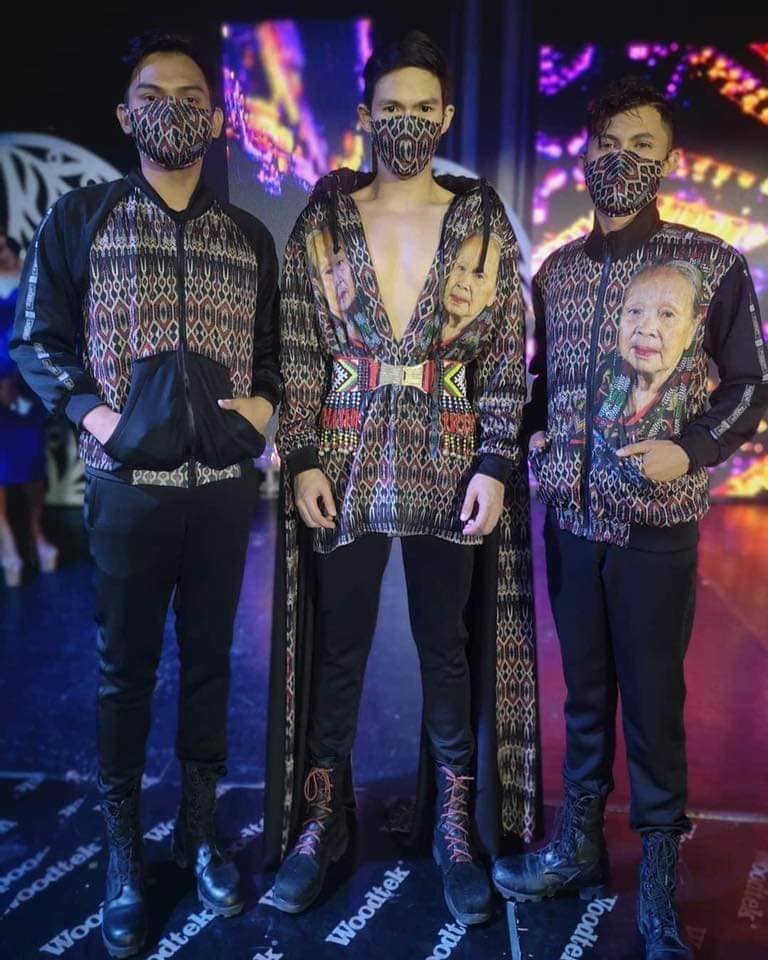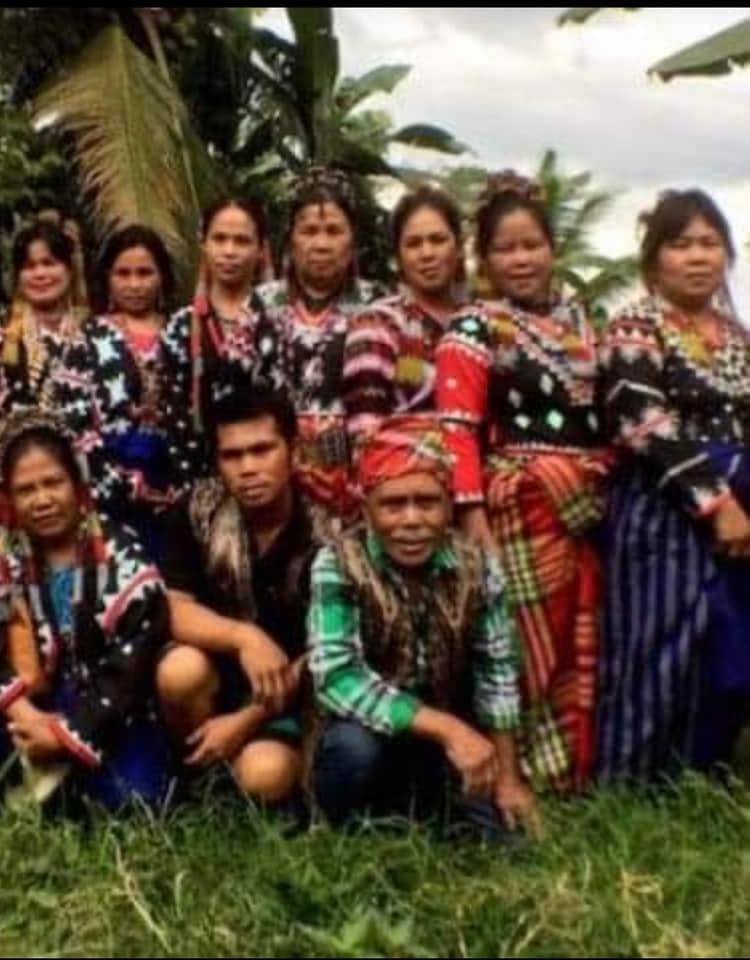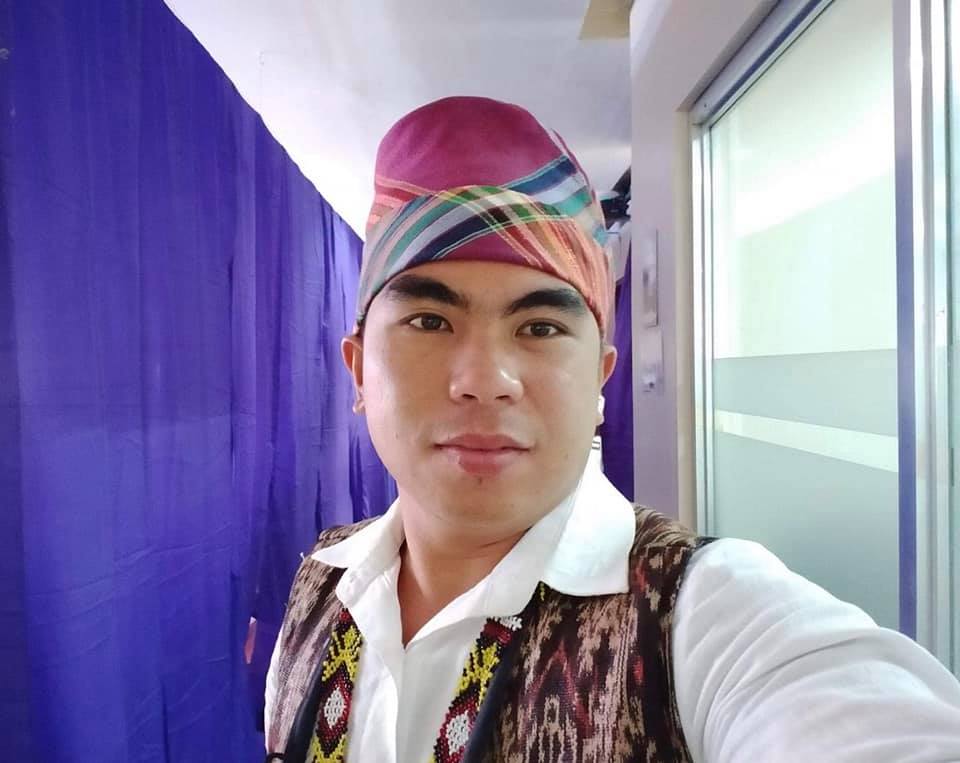
This article was written when the controversy of Gawad Manlilikha ng Bayan Boi Lang Dulay’s photo appeared on the polo shirts of male models at a fashion show.
The recent inappropriate use of Lang Dulay’s photo during a fashion show in South Cotabato drew flak from many sectors around the country putting designer Jearson Demavivas in the hot seat.
The MCCWG immediately sought out the Dulay family through Ateneo de Davao University (ADDU) professor and Davao artist Noi Narciso.
The MCCWG tried but failed to get in touch with Demavivas. The MCCWG however, remains open to Demavivas to air his side on this issue.
Nowhere also in our interviews were questions raised about the t-shirt and facemask with innovative designs based on Tboli art by Settler artist Wilson Limon of Nino Franco and worn by the country’s Vice President.
Lang Dulay, textile weaver was conferred the Gawad Manlilikha ng Bayan in 1998. She passed on in 2015 according to her grandson Delmo Amfan Dulay, 27, a Graduate student of Anthropology at the Ateneo de Davao University (ADDU).
Delmo and Benjie Manuel, Teacher in Charge of the Tboli Sbu (Sebu) Senior High School denounce the cultural misappropriation of the tnalak appearing on ‘tsinelas’ and the image of Gawad Manlilikha Awardee Boi Lang Dulay on shirts of male, fashion models imitating the attire of characters in the movie Star Wars.

Both decry the manner Tboli artistic form and the image of a venerable member of its community were used for commercial purposes without permission from the tribe. This likewise reminds the country of the misappropriation of the term “bagani” in a commercial TV series.
“We’re not condemning fashion designers but they should have cultural responsibility. Our family has filed the protest at the National Commission on Indigenous Peoples (NCIP) because nawala and essence or effort put into the weaving of tnalak”, said Delmo.
The agency (government) that conferred the award on Be (grandmother) should help protect her legacy, Delmo articulated as he described how the photo was used by the designer through the digitized sublimation printing.
Aside from the provisions of the NCIP also known as RA No. 8371, the Indigenous Peoples Rights Act (IPRA), the writer and Professor Dr. Erlinda Kintanar Alburo suggested that an international policy on the protection of indigenous material and intangible culture with guidelines should be made because the use of these is cross-cultural as well.
Had permission been sought from the community Delmo said, “the community could have assisted the designer and gave it the chance to share the proper usage of material rather than just claim ‘inspiration’ from Tboli designs.
Delmo, grandson of Lang Dulay expressed his community’s concerns in a phone interview with MCCWG. Despite the late hour, Delmo who is based in Lake Sebu, South Cotabato accommodated our request for an interview, provided us the photos we needed and taught us some phrases and the pronunciation of a few Tboli words.
Delmo also teaches in the Tboli Sbu Senior High School, a DepEd program in collaboration with ADDU. He looked back with fondness about his Be (grandmother), third wife of seven wives of his late Teme (grandfather), Datu Kuman Dulay.
Benjie, for his part, shared with us that his protest on the use of Tnalak to adorn slippers is not even resolved yet, another controversy involving designer Demavivas is in the news.
“This is not the first time it has happened. Boi Lang Dulay is an icon, a Gawad Manlilikha ng Bayan and if this is done to her, it can be done to others,” Benjie asserted.
Benjie said there is no policy nor sanction to this cultural misappropriation yet, as far as he knows, but he is working on it by making formal the protest with the Sangguniang Pambayanan. “Before any platform to promote us, there should be understanding about us in order to protect our identity”, Benjie added.
comments are temporarily disabled.















